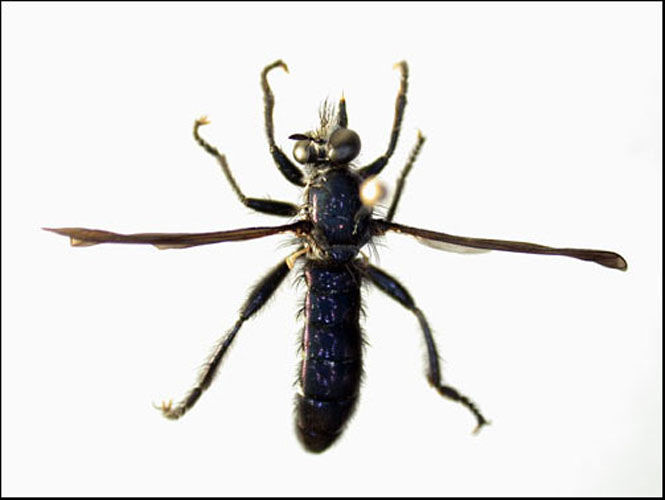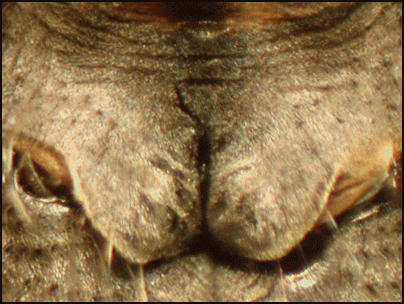Robber flies of South Korea
Subfamily Laphriinae
Key to the South Korean Genera of the Subfamily Laphriinae
1. Proboscis short, triangular in cross section; vein closing discal cell aligned with vein closing 4th posterior cell; metallic,
purple/blue flies . . . Orthogonis
- Proboscis much longer, laterally flattened; vein closing discal cell not aligned with vein closing 4th posterior cell . . . 2
2. Parafacial hair in dense gold/yellow/silver/black mats, clearly differentiated from surrounding hairs and bristles; elongated,
slender setose flies, not resembling bumble bees; gonocoxite clearly separated into 2 halves by a depression or long setae
. . . Choerades
- Parafacial hair not in dense mats, not differentiated from surrounding hairs or bristles; short, squat, heavily setose flies resembling
bumble bees; gonocoxite not separated into 2 halves . . . Laphria
Key to the South Korean Species of the Genus Choerades
1. Proboscis apex narrowed to a blunt point; 18 mm in length . . . Choerades sp.
- Proboscis apex not narrowed . . . 2
2. Proboscis apex dorsally sharp, ventrally upturned; 10-14.5 mm in length . . . Choerades caudatus
- Proboscis apex not dorsally sharp, not ventrally upturned . . . 3
3. Proboscis apex angled, longer ventrally; males with apical knobs on tergites 6 & 7; 15-23 mm . . . Choerades caucasicus
- Proboscis apex not angled; males without tergal knobs . . . 4
4. Scutum of thorax with a distinct, narrow integumental stripe; 11 mm in length . . . Choerades nigrovittatus
- Scutum of thorax without a distinct, narrow integumental stripe . . . 5
5. Tergites 2-4 with light gray/white pollinose spots on posterior lateral edges; 11 mm in length . . . Choerades asprospilos sp. nov.
- Tergites 2-4 without light gray/white pollinose spots on posterior lateral edges . . . 6
6. Long, gold appressed hair on scutum and scutellum; long gold hair on tergites; denser on 3 apical tergites; gonocoxite with a sharp,
thin, apical fin-like projection of fused bristles; 11-19 mm . . . Choerades komurai
- Hair on scutum and scutellum different, or bare, gonocoxite without apical fin . . . 7
7. Long gold/red mats of hair on tergites 3-7 contrasting against black tergites 1 & 2; 16 mm . . . Choerades gilva
- Tergites of different color and hair . . . 8
8. Bare black flies; integument of scutellum wrinkled; 12-17 mm . . . Choerades japonicus
- Long mats of bright gold hair on medial and lateral surfaces of tergites; similar to C caucasicus, but much smaller,
less setose flies; 13-16 mm . . . Choerades amurensis
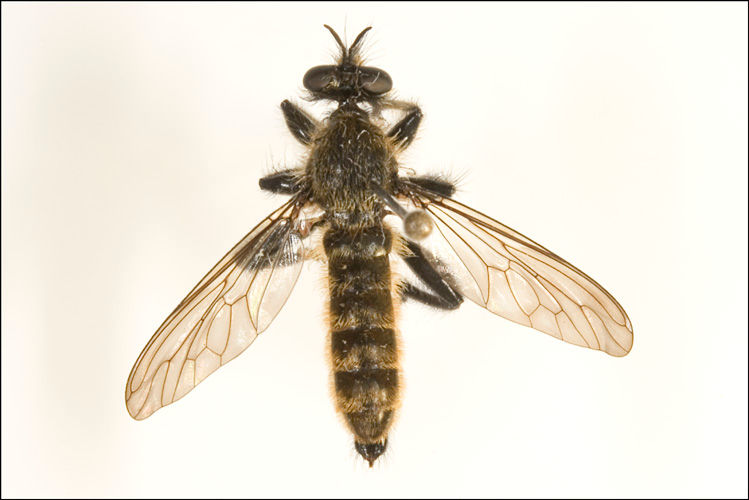
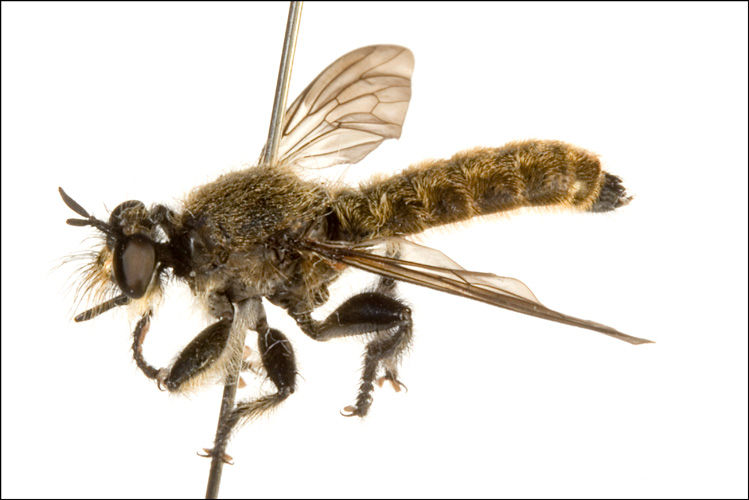


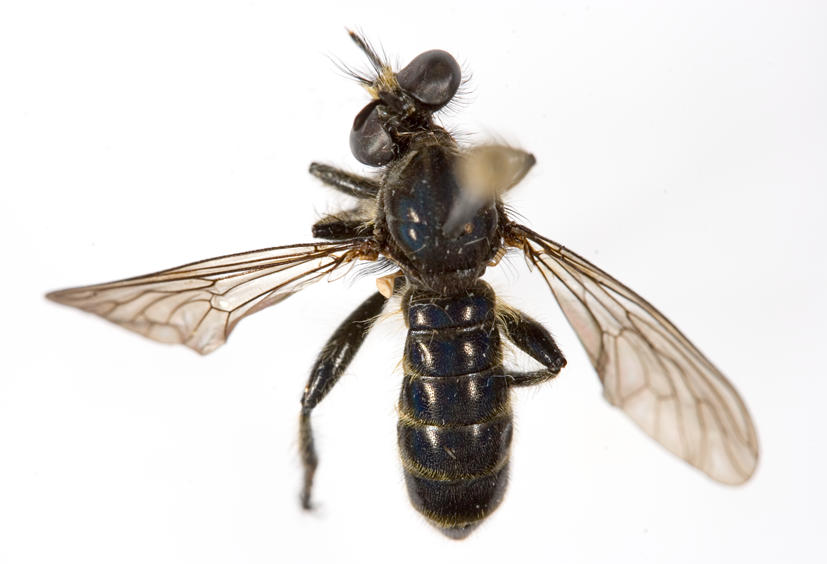
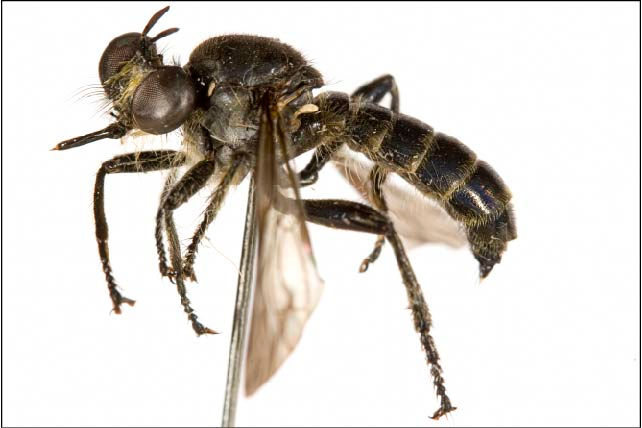
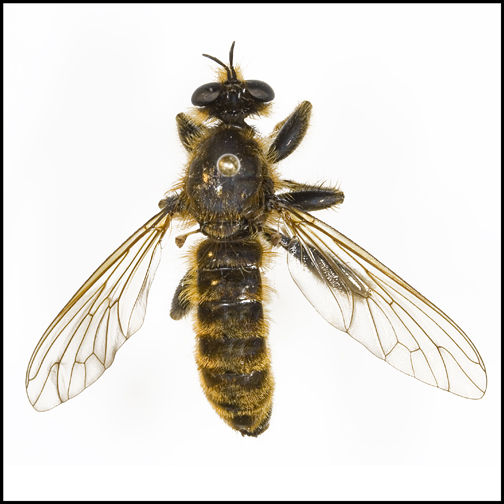






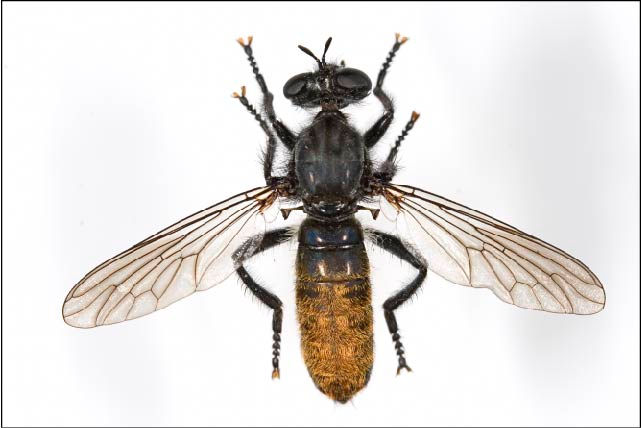

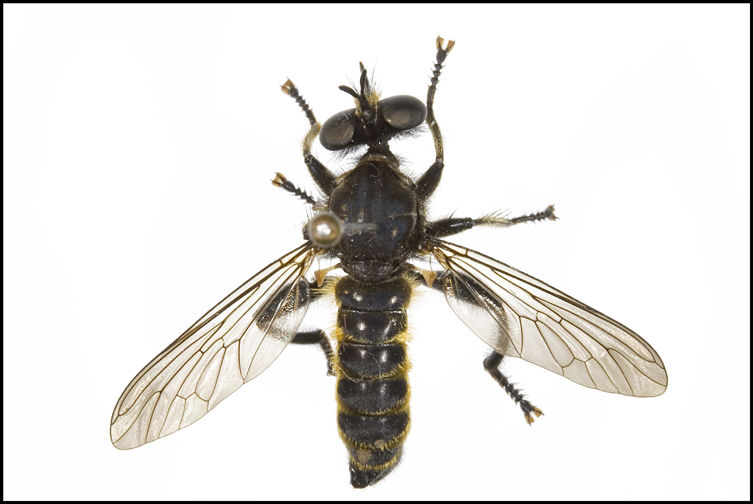
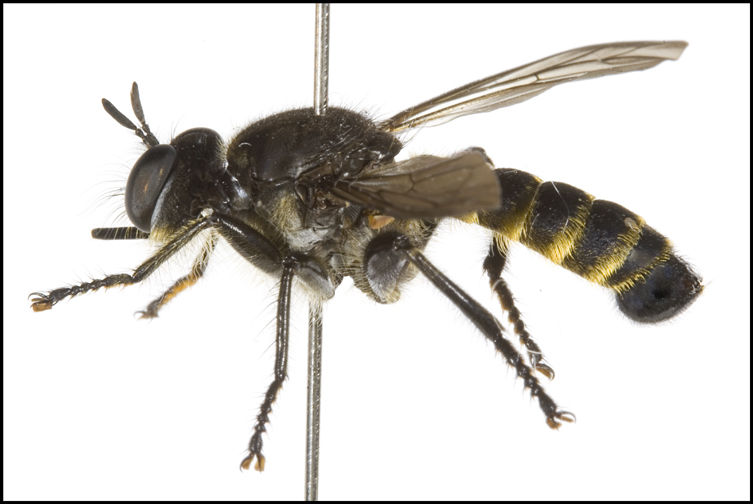

Key to the South Korean Species of the Genus Laphria
1. Abdominal tergites integumental black, with sparse yellow hair . . . Laphria hakiensis
- Abdominal tergites with long black, red, orange or yellow dense hair, covering integument . . . 2
2. Hair posterior of transverse suture mostly black; tergites 1-3 with short black medial hair and longer black lateral hair;
tergite 4 with bright orange marginal hair; tergites 5 & 6 covered completely in long mats of bright orange hair . . . Laphria mitsukurii
- Hair posterior of transverse suture yellow; tergites 1-3 with short yellow medial hair and longer yellow lateral hair; tergites 4-6 covered in
long mats of yellow hair . . . Laphria rufa
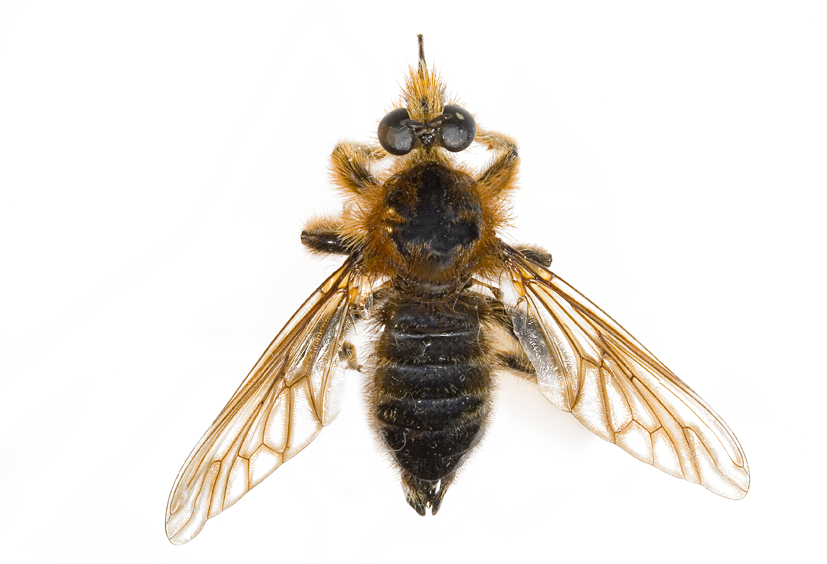
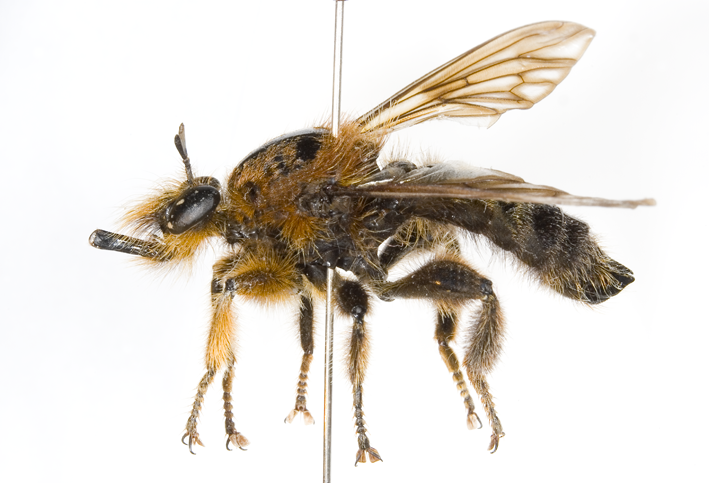


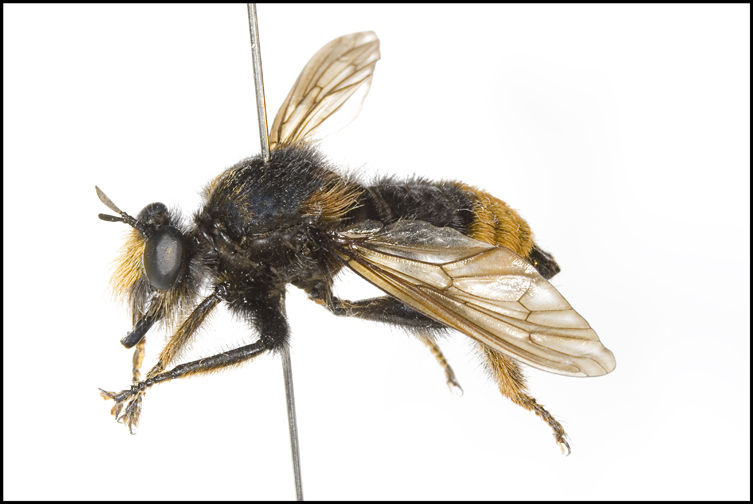
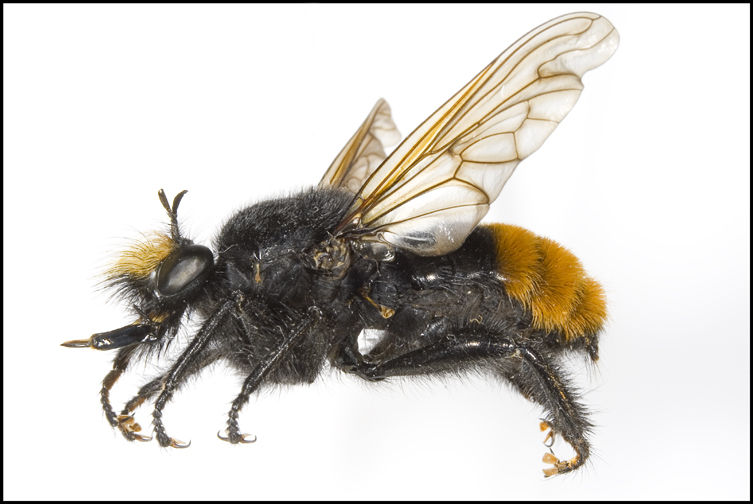

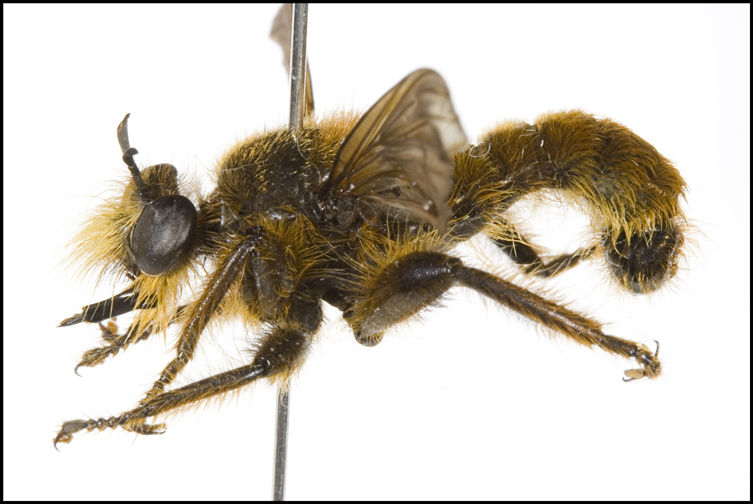
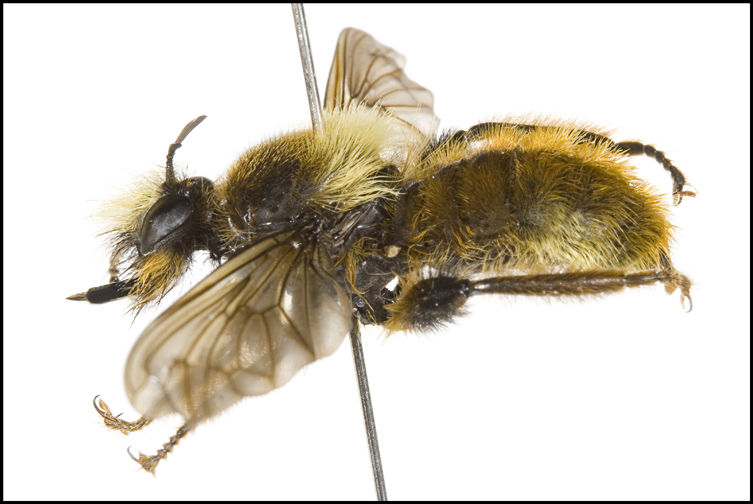
South Korean Species of the Genus Orthogonis
